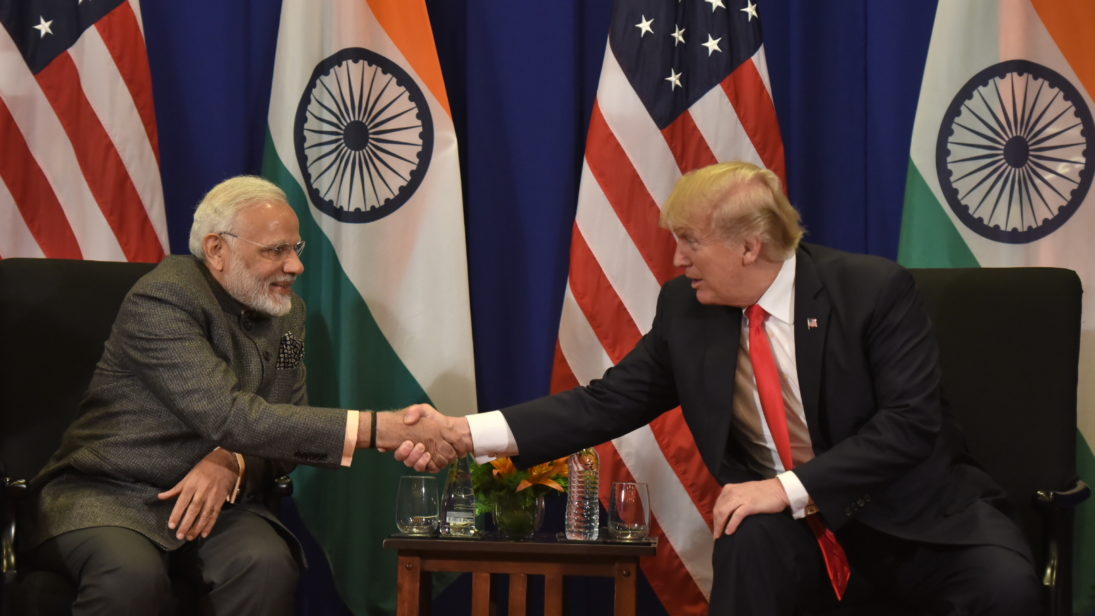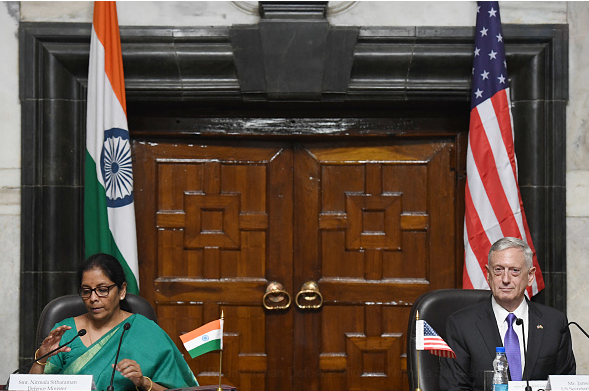
The Trump administration recently released two significant policy documents, namely the National Security Strategy (NSS) and an unclassified synopsis of the National Defense Strategy (NDS) for 2018. In terms of the regional priorities of U.S. foreign policy, both the NSS and NDS are quite emphatic in their focus on the “Indo-Pacific region.” This geopolitical construct is both the Trump administration’s preferred name for the region spanning the Indian and Pacific Oceans—what previous administrations have called the Asia-Pacific or even the Indo-Asia-Pacific—and an indicator of evolving U.S. foreign policy and grand strategy in Asia. Besides President Trump, the U.S. Secretary of State and the Secretary of Defense have embraced the region publicly.
Some commentators in India saw America’s earlier reliance on the term “Asia-Pacific” as an exclusion of India’s growing status in global geopolitics. With the release of the NSS and the NDS, commentators both within and outside of the United States have begun to see the Trump administration’s shift towards the Indo-Pacific as a recognition of India’s critical role in the Indian Ocean Region (IOR) and on the world stage. While this evolution in U.S. policy presents new opportunities for the Indo-U.S. partnership to thrive, it is also true that New Delhi must locate the strategic space to maximize its interests in the Indo-Pacific without becoming a front in the great power competition between the United States and China.
Countering the Chinese Threat
The NDS is quite categorical in its contention that “inter-state strategic competition, not terrorism, is now the primary concern in U.S. national security.” In this context, China is a prominent “strategic competitor,” using “predatory economics to intimidate its neighbors while militarizing features in the South China Sea.” In comparison to the NDS, the NSS is high on rhetoric, often highlighting broad concepts such as “America first” and “principled realism.” However, both documents toe the same line when referring to the Chinese threat in the Indo-Pacific. They both envision a China that has pursued its military modernization with the short-term aim of achieving regional hegemony in the Indo-Pacific region and long-term ambition of displacing America’s global preeminence.
According to the NDS, the United States must respond to the Chinese threat by creating a “networked security architecture capable of deterring aggression, maintaining stability, and ensuring free access to common domains” with “key countries in the region.” Importantly, the NSS singles out Japan, India, and Australia as important partners in the Indo-Pacific and specifies that the United States will seek to increase “quadrilateral cooperation” with these three countries. This line seems to hint towards the possible expansion of the existing India-Japan-United States trilateral Malabar naval exercises to include Australia—something Canberra reportedly requested last spring. The wording of the NSS, as well as the emphasis of an Indo-Pacific “security architecture” in the NDS, also suggests there may be a U.S. push towards the revival of the quadrilateral, an informal grouping intended to facilitate cooperation between India, the United States, Japan, and Australia that was conceived of but failed to materialize in 2007. The idea behind the Quad began to regain traction in policy circles in 2017 when senior officials from these four countries met on the sidelines of the East Asia Summit in November for a “working level” meeting. This month, the naval chiefs from each of the Quad countries shared the same dais at the Raisina Dialogue in New Delhi to discuss the search for order in the Indo-Pacific region. Even if a ministerial-level quadrilateral meeting is a distant reality, this is a significant message to Beijing that these maritime democracies are aligned in their mindset towards the rise of Chinese unilateralism in the Indo-Pacific.
The NSS also emphasizes the importance of the Association of Southeast Asian Nations (ASEAN) as a “centerpiece” of the “Indo-Pacific’s regional architecture.” On this front, Washington and New Delhi appear to be on the same page, as Indian Prime Minister Narendra Modi recently met with the ten ASEAN heads of state on India’s 69th Republic Day and underscored the need for maritime security and freedom of navigation.

Strategic Importance of the Indo-U.S. Partnership
In the context of heightened strategic competition with China, bilateral relations between India and the United States have assumed great strategic importance in U.S. foreign policy and grand strategy. The NSS explicitly welcomes “India’s emergence as a leading global power and stronger strategic and defense partner.” In return, India’s Ministry of External Affairs released a statement appreciating “the strategic importance given to India-US relationship” in the NSS.
In practice, the vision outlined in the NSS and NDS means that India and the United States can make tangible progress towards a stronger strategic partnership on multiple fronts. Having reached $15 billion USD in defense trade, the Indo-U.S. partnership can continue to make slow progress by way of the Defense Trade and Technology Initiative (DTTI). A recent address by U.S. Ambassador to India Kenneth Juster highlighted that the United States would like to ink an agreement to co-develop the Future Vertical Lift platform and Advanced Technology Ground Combat Vehicles with India in 2018.
Given the increasing salience of the Indo-Pacific region, the United States and India can also improve bilateral cooperation on maritime security. The two countries have already developed strategic convergence on the freedom of navigation and overflight in the Indo-Pacific region. The United States’ forward-based deployment in the Western Pacific waters and the Indian Navy’s new emphasis on mission-based deployment reflect both countries’ desire to deter China’s intention of increasing its sphere of influence in the Indo-Pacific waters. To this end, the United States and India should work together to further improve the Indian Navy’s maritime domain awareness (MDA), particularly in the Indian Ocean.
India-United States-China Trilateral Dynamics
The crude and at times hyperbolic identification of “a geopolitical competition between free and repressive visions of world order” in the NSS and NDS might present challenges for the course of India’s foreign policy maneuvering. While India shares security interests with the United States in managing China’s rise in the Indo-Pacific, India also engages with China in multilateral forums such as BRICS (Brazil, Russia, India, China, South Africa), the Shanghai Cooperation Organization, and the Russia, India, China groupings. Hence, India needs to be mindful of the evolving great power relationship between the United States and China.
Delhi must also remain cognizant of the shifting sands of United States-China relations. Washington, after failing to prevent China from becoming Communist in 1949, did not recognize the People’s Republic of China. But, the same Washington found strategic unity with Beijing through the U.S.-China rapprochement in 1972 to counter Soviet hegemony in the Asia-Pacific after the Sino-Soviet split. Now, with China emerging as its strategic competitor, the United States intends to cement is alliances and build new partnerships to deter China’s hegemony in the Indo-Pacific. While New Delhi needs to ramp up its security partnership with Washington with an eye to countering a militarily stronger China, it would be strategic naïveté to be blind to the fact that America’s priorities, and not India’s concerns, will determine Washington’s choice of friends and partners. Thus, New Delhi should engage with an “America first” foreign policy in the Indo-Pacific region with an “India first” foreign policy, prioritizing the security partnership with the United States wherever necessary while keeping the channels of cooperation open with China wherever possible.
Editor’s note: With the recent release of the National Security Strategy by the White House and the National Defense Strategy by the Pentagon, the Trump administration articulated its strategic priorities at home and abroad. In this four-part series, SAV contributors Monish Tourangbam, Hamzah Rifaat, Amina Afzal, and Pooja Bhatt analyze how these policy formulations may impact South Asia. Read the entire series here.
Click here to read this article in Urdu.
***
Image 1: MEAphotogallery via Flickr
Image 2: Prakash Singh via Getty


